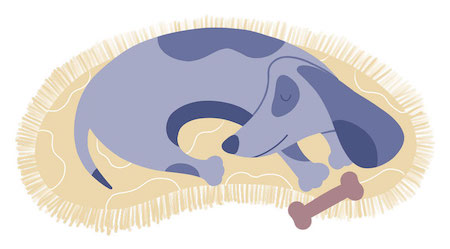 We spend a lot of time thinking about how humans sleep, especially how much we sleep we can get uninterrupted. What about how our pets sleep? Or the animals at the zoo? Does sleep for animals serve the same purpose for them as it does for us?
We spend a lot of time thinking about how humans sleep, especially how much we sleep we can get uninterrupted. What about how our pets sleep? Or the animals at the zoo? Does sleep for animals serve the same purpose for them as it does for us?
When an animal sleeps, it helps them retain their memory and learn. This is why animals with larger brain sizes require more REM sleep. All animals need sleep, but their sleep styles and patterns can vary greatly depending on their environment and species.
Sleeping patterns in all animals have evolved over time: Animals that are attacked by predators while sleeping will be less likely to pass their sleeping habits onto their young. This allows each generation to develop new ways to keep themselves safe while they sleep.
For instance, otters hold hands while they sleep, or they wrap themselves in seaweed to stay afloat and keep their young protected. Like some humans who share a bed with a partner, herd animals like cows and sheep sleep closely together since there’s much more safety in numbers against potential predators.
Another thing that differs between animals and humans when it comes to sleep? Humans are way pickier about their beds (and pillows!).
Carnivores vs. Herbivores: Sleep Patterns
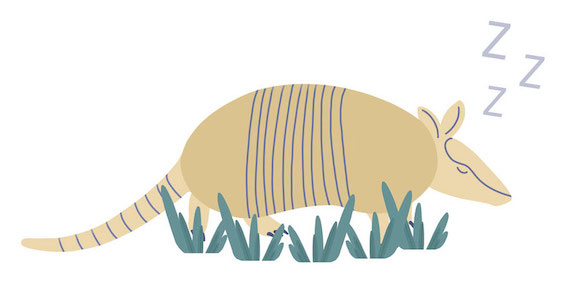 While there are many different reasons for varying sleep patterns in animals, evolutionary biologists theorize that the fear of predators plays a big role. Carnivores typically sleep more than herbivores; for example, lions sleep in short spells throughout the day and night so they have the energy to stalk and kill food whenever it’s available.
While there are many different reasons for varying sleep patterns in animals, evolutionary biologists theorize that the fear of predators plays a big role. Carnivores typically sleep more than herbivores; for example, lions sleep in short spells throughout the day and night so they have the energy to stalk and kill food whenever it’s available.
Most animals sleep depending on how much they eat. Animals that eat food with less caloric density will likely sleep less than other animals. This is why herbivores often need to be awake for longer periods of time since they need to be sure to get enough food to supply them with energy. Animals that graze, like giraffes and elephants, may only sleep 30 minutes to a few hours per day.
RELATED: How To Keep Your Pet Healthy
Which Animals Sleep the Most Per Day?
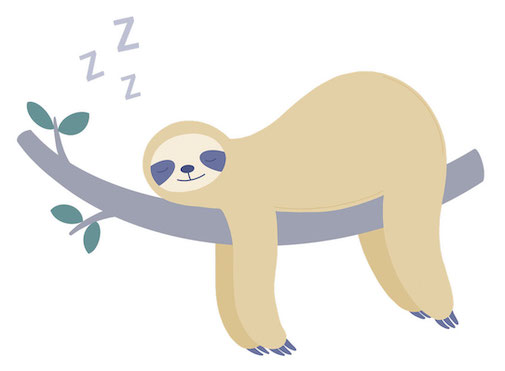 People might think that the sloth sleeps the most out of every animal. But just because they’re slow doesn’t mean they sleep more than other species. While sloths do get around 14 hours of sleep on average each day, this is about the same amount of sleep that the average dog gets.
People might think that the sloth sleeps the most out of every animal. But just because they’re slow doesn’t mean they sleep more than other species. While sloths do get around 14 hours of sleep on average each day, this is about the same amount of sleep that the average dog gets.
Here are the animals that sleep the longest per day:
- Large hairy armadillo: 20.4 hours
- Little pocket mouse: 20.1 hours
- Brown bat: 19.9 hours
- North American opossum: 18 hours
- Python: 18 hours
- Owl monkey: 17 hours
Smaller Animals
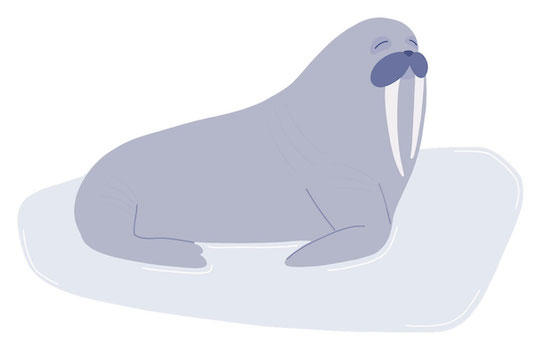 Animals that are considered prey, such as deer and sheep, only sleep around three to four hours a night. Most prey and smaller-sized animals sleep less than larger animals, although that’s not always the case for every species.
Animals that are considered prey, such as deer and sheep, only sleep around three to four hours a night. Most prey and smaller-sized animals sleep less than larger animals, although that’s not always the case for every species.
For example, even though walruses are large, they don’t really need much sleep. They can stay awake as long as 84 hours at a time. The walrus fills up its pharyngeal pouches with air, allowing it to stay afloat while it sleeps. Walruses also hang onto ice sheets with their teeth and can sleep standing up or lying down.
Walruses can also sleep at temperatures much cooler than us. The ideal temperature for our bedrooms is around 60 to 67 degrees!
Larger Animals
Another large animal that doesn’t sleep much is the elephant. These intriguing creatures only get around two to four hours of sleep per day and spend most of their time eating plants throughout the day. Elephants usually sleep standing up, or they may lean against a termite mound or large tree. If an elephant sleeps on its side, it only sleeps for a short period, usually a half-hour or less, to keep its body weight from crushing its internal organs.
RELATED: Dogs Vs. Cats: Study Sheds Light On How Different Pets Affect Sleep Quality
Some Animals Barely Sleep
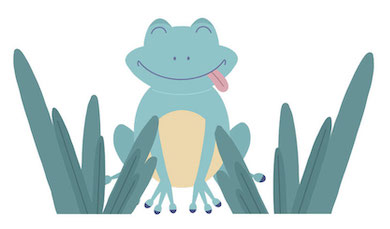 Some species of frogs can go for months at a time without sleep and only rest their eyes on occasion. These amphibians have a large amount of glucose in their system that keeps their vital organs from freezing in the winter, and this helps them survive even if their heart stops beating and they don’t breathe. This is why people may see frogs “come back to life” once the spring thaw arrives.
Some species of frogs can go for months at a time without sleep and only rest their eyes on occasion. These amphibians have a large amount of glucose in their system that keeps their vital organs from freezing in the winter, and this helps them survive even if their heart stops beating and they don’t breathe. This is why people may see frogs “come back to life” once the spring thaw arrives.
Meanwhile, giraffes may sleep as little as 30 minutes a day. And horses can sleep for as little as two hours a day. These creatures sleep in about 15-minute intervals, and they sleep standing up: They have to since their large size and long neck makes it more difficult to get up, putting them at risk of being attacked by a predator. Evolution has allowed the giraffe to take short naps throughout the day.
RELATED: The Ultimate Guide To Naps
How Do Animals Sleep Standing Up?
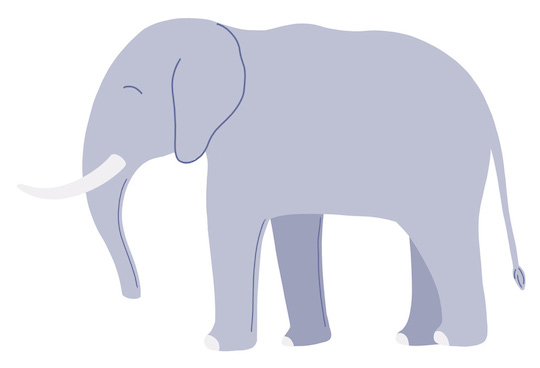 For those who have ever wondered how some animals sleep standing up, it’s all thanks to evolution. Animals like horses, cows, elephants, and giraffes have adapted to sleep this way in order to protect themselves from dangerous predators. Since they’re already standing up, it’s much easier for them to run away and make their escape. These animals are able to lock their legs so that the muscles don’t need to keep them in place. When they sleep standing up, they cannot achieve REM sleep, which is why they will lie down on some occasions.
For those who have ever wondered how some animals sleep standing up, it’s all thanks to evolution. Animals like horses, cows, elephants, and giraffes have adapted to sleep this way in order to protect themselves from dangerous predators. Since they’re already standing up, it’s much easier for them to run away and make their escape. These animals are able to lock their legs so that the muscles don’t need to keep them in place. When they sleep standing up, they cannot achieve REM sleep, which is why they will lie down on some occasions.
Even a few species of birds sleep standing up, although it’s for a different reason than mammals. Mammals who sleep standing up are protecting themselves from predators, but birds sleep standing up if they can’t find a comfortable place to lie down. They do so by clamping the tendons in their legs into a locked position around branches or wires.
How Does Hibernation Work?
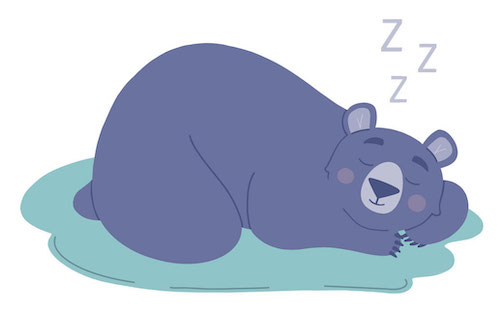 Some species go into a state of hibernation during the summer or winter months to save energy. During the winter, this is known as hibernation, while in the summer, it’s called estivation. A few species of animals will go into this mode every day, such as the American badger and the elegant fat-tailed mouse opossum.
Some species go into a state of hibernation during the summer or winter months to save energy. During the winter, this is known as hibernation, while in the summer, it’s called estivation. A few species of animals will go into this mode every day, such as the American badger and the elegant fat-tailed mouse opossum.
The length of the day, availability of food, and temperature all signal animals when it’s time to go into hibernation. Their core body temperature begins to drop as their blood flow, brain activity, and heart rate begins to slow down.
Hibernation and sleep are two different things, however. Animals that are in hibernation mode can survive for a long period of time without eating or relieving themselves. Bears wake from hibernation in order to give birth, and the mother bear will go back into hibernation while the baby cub nurse. This is a key survival tactic since most animals go into hibernation during periods when food is scarce.
Mammals and Sleep
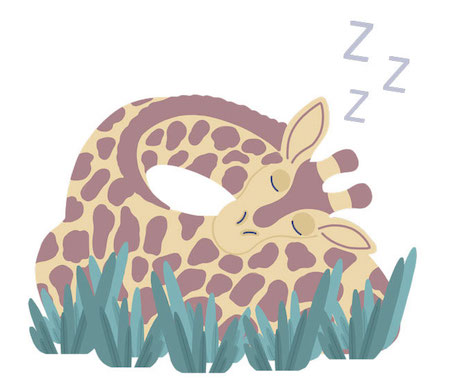 In general, other mammals sleep very similarly to humans. Their sleep is divided into a light sleep, deep sleep, and REM sleep, although the amount of sleep varies greatly. Armadillos and opossums sleep around 18 hours per day, while horses and giraffes sleep less than three hours a day. Humans fall somewhere in between, requiring seven to nine hours of sleep on average each night.
In general, other mammals sleep very similarly to humans. Their sleep is divided into a light sleep, deep sleep, and REM sleep, although the amount of sleep varies greatly. Armadillos and opossums sleep around 18 hours per day, while horses and giraffes sleep less than three hours a day. Humans fall somewhere in between, requiring seven to nine hours of sleep on average each night.
RELATED: What Is The Ideal Number Of Hours To Sleep?
Most mammals sleep several times per day. This is known as polyphasic sleep. Depending on the animal, they may sleep more during the day or night, although diurnal animals typically tend to sleep at night.
Primates sleep in one period each day. Monkeys sleep sitting upright to stay safe against predators, but great apes like gorillas and chimpanzees prefer to lay down. They sleep on nesting platforms in trees, very similar to human beds. These platforms allow them to stay up high in trees so they can stay safe from predators and annoying insects. These comfortable platforms give the apes a feeling of security, allowing them to get more REM sleep. With REM sleep, cognitive development provides a competitive advantage over many other species.
How Do Marine Mammals Sleep?
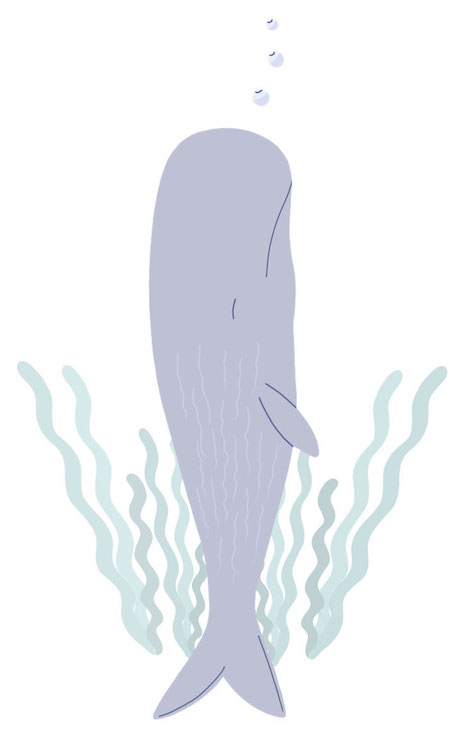 Marine mammals live in the water, but they come to the surface to breathe. To keep from suffocating while they sleep, animals like seals, dolphins, and whales experience unihemispheric sleep, in which they sleep with one brain hemisphere at a time. The other hemisphere is awake, so the animal can move, see through one eye, and breathe.
Marine mammals live in the water, but they come to the surface to breathe. To keep from suffocating while they sleep, animals like seals, dolphins, and whales experience unihemispheric sleep, in which they sleep with one brain hemisphere at a time. The other hemisphere is awake, so the animal can move, see through one eye, and breathe.
In some case, dolphins may float on top of the water while they sleep. This behavior is called “logging” and scientists have even discovered that some dolphins sleep while swimming in a circle. Another study found that dolphins may be able to achieve a level of unihemispheric sleep that still allows them to perform complex tasks.
Newborn orca whales can go weeks without sleep, and their mothers can, too. Sperm whales sleep upright and do not sleep with one brain hemisphere at a time. Scientists believe these whales may require the least amount of sleep of all mammals.
Birds and Sleep
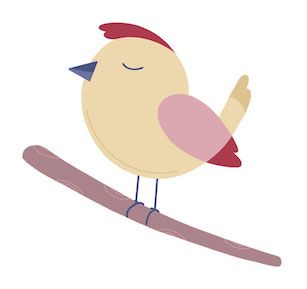 When birds migrate, they’re able to fly nonstop. While the migration periods can vary depending on the species, some can last for months at a time, such as the migration of the alpine swift, which lasts for around 200 days. Many migratory species of birds sleep with one brain hemisphere just like marine mammals. This allows them to continue on with their long journey.
When birds migrate, they’re able to fly nonstop. While the migration periods can vary depending on the species, some can last for months at a time, such as the migration of the alpine swift, which lasts for around 200 days. Many migratory species of birds sleep with one brain hemisphere just like marine mammals. This allows them to continue on with their long journey.
A study of frigate birds from the Galapagos Islands revealed that the birds stayed awake and alert during the day. At night when they took to flight, they underwent slow-wave sleep for several minutes at a time. Their heads would even drop during short episodes of REM sleep, which only lasted a few minutes so as not to interrupt their flight patterns.
RELATED: How Your Sleep Cycle Works
Other birds, like Swainson’s thrushes, take power naps to make up for lost sleep. Some birds sleep in a way that protects themselves, like ducks, who tend to sleep in a row. The ducks on each end sleep with a different eye closed, and the middle ducks close both eyes. This indicates that the ducks on the end are sleeping in a unihemispheric manner so they can keep watch and protect the group from predators.
Reptiles and Sleep
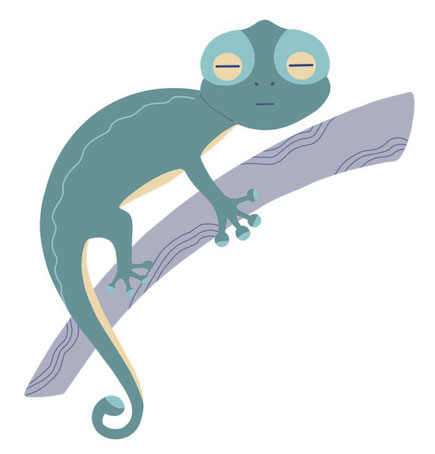 Reptiles’ sleeping patterns vary greatly. Lizards experience a sleep cycle that usually lasts only around 80 seconds, in comparison to 70 to 100 minutes for humans. Lizards also go through around 350 sleep cycles per night, while humans experience around four to five. Reptiles do not have cerebrums, and scientists previously thought that REM sleep only took place in more highly evolved creatures like birds and mammals. But a recent study of Australian bearded dragons revealed that they can, in fact, achieve REM sleep.
Reptiles’ sleeping patterns vary greatly. Lizards experience a sleep cycle that usually lasts only around 80 seconds, in comparison to 70 to 100 minutes for humans. Lizards also go through around 350 sleep cycles per night, while humans experience around four to five. Reptiles do not have cerebrums, and scientists previously thought that REM sleep only took place in more highly evolved creatures like birds and mammals. But a recent study of Australian bearded dragons revealed that they can, in fact, achieve REM sleep.
When we sleep, we typically close our eyes, as our eyelids keep the eyes protected and moisturized. Animals like snakes use transparent scales that function similarly to eyelids; since they’re clear, it’s difficult to tell if or when they are asleep. If a snake stays perfectly still, that’s the best indicator that the animal is truly asleep.
Fish and Sleep
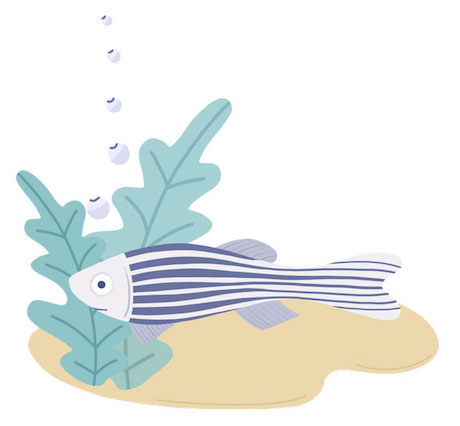 Fish look like they are daydreaming when they’re asleep, appearing motionless as they hover near the bottom of the sea or their tank. Every once in awhile, they’ll flick their fins to keep steady and afloat. The sleep pattern of fish depends heavily on their environment and their activity level. Fish that live in an aquarium adjust their sleep cycles depending on the lights inside the building where they live.
Fish look like they are daydreaming when they’re asleep, appearing motionless as they hover near the bottom of the sea or their tank. Every once in awhile, they’ll flick their fins to keep steady and afloat. The sleep pattern of fish depends heavily on their environment and their activity level. Fish that live in an aquarium adjust their sleep cycles depending on the lights inside the building where they live.
Sharks must have constant ventilation of their gills, so they have to keep swimming even while they sleep. Sharks do not close their eyes or enter REM sleep.
A surprising discovery was found in the zebrafish. This unique fish appears to experience insomnia, similar to humans. Scientists induced sleep deprivation in the fish, and later, it displayed classic symptoms of insomnia along with reduced sleep time. Another fish called the Parrotfish secretes a jelly-like mucus that surrounds it and keeps it protected as it sleeps.
Animals and Sleep Deprivation
Some animals can die if they are subject to sleep deprivation for long enough. This is true for mammals like rats, and some insects may also die due to prolonged periods of sleep deprivation. It’s very difficult to discern whether other animals suffer from the same cognitive impairment that humans do whenever we lose sleep. It’s also difficult to tell if this problem shows itself in the form of sleepiness or fatigue like in humans.
RELATED: Everything You Need To Know About Sleep Deprivation
Are There Animals That Do Not Sleep?
All animals, including insects, must sleep. Even lower animals with very little or even no brain sleep, although it’s in a much different way than humans and other mammals. These animals do exhibit periods of inactivity and less response to stimuli. Some research with fruit flies has shown that some of the same biochemical activity in the brain occurs as we see in humans during sleep. Evolution requires that all living things undergo some form of sleep in order to survive.
Resources
- The Characteristics of Sleep: Read this page to learn more about the many important characteristics of sleep.
- Animals Have Complex Dreams: A researcher at MIT discovered that many animals experience quite complex dreams.
- How Do Whales and Dolphins Sleep Without Drowning? Scientific American explores how marine mammals can sleep underwater.
- Walruses Are World’s Most Unusual Snoozers: Learn more about the way that walruses sleep here.
- Unihemispheric Sleep: Learn more about the unique process of unihemispheric sleep here.
- Do Birds Sleep? The Cornell Lab of Ornithology discusses more birds and their unique sleeping habits.
- Bearded Dragons Show REM and Slow-Wave Sleep: Discover more about how this species of lizard undergoes REM sleep.
- Do Fish Sleep? This page explains more about fish and how they sleep.
- Who Needs Sleep, Anyway? This page discusses a variety of animals and how and why they need to sleep.
Featured image: AKKHARAT JARUSILAWONG/Shutterstock

